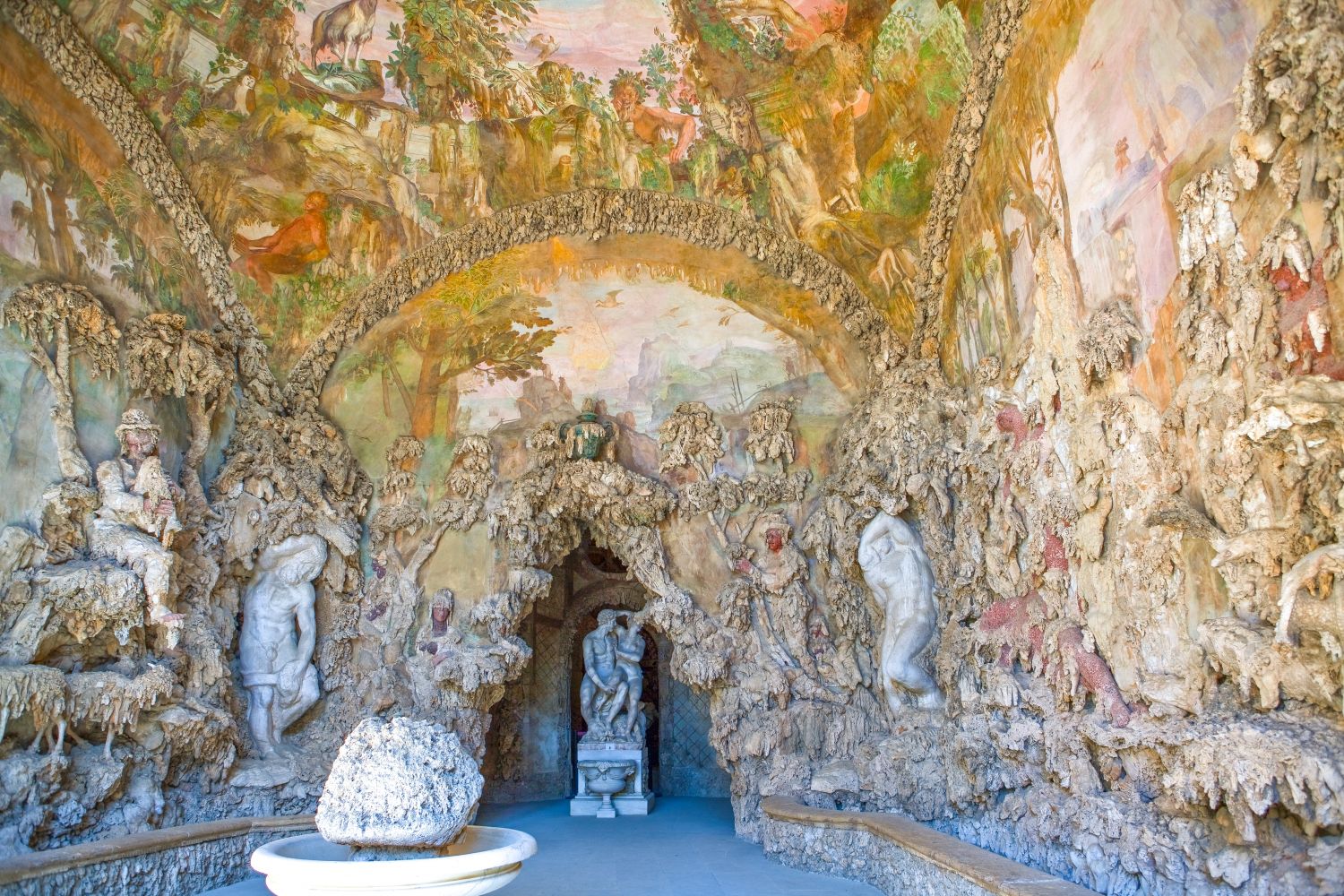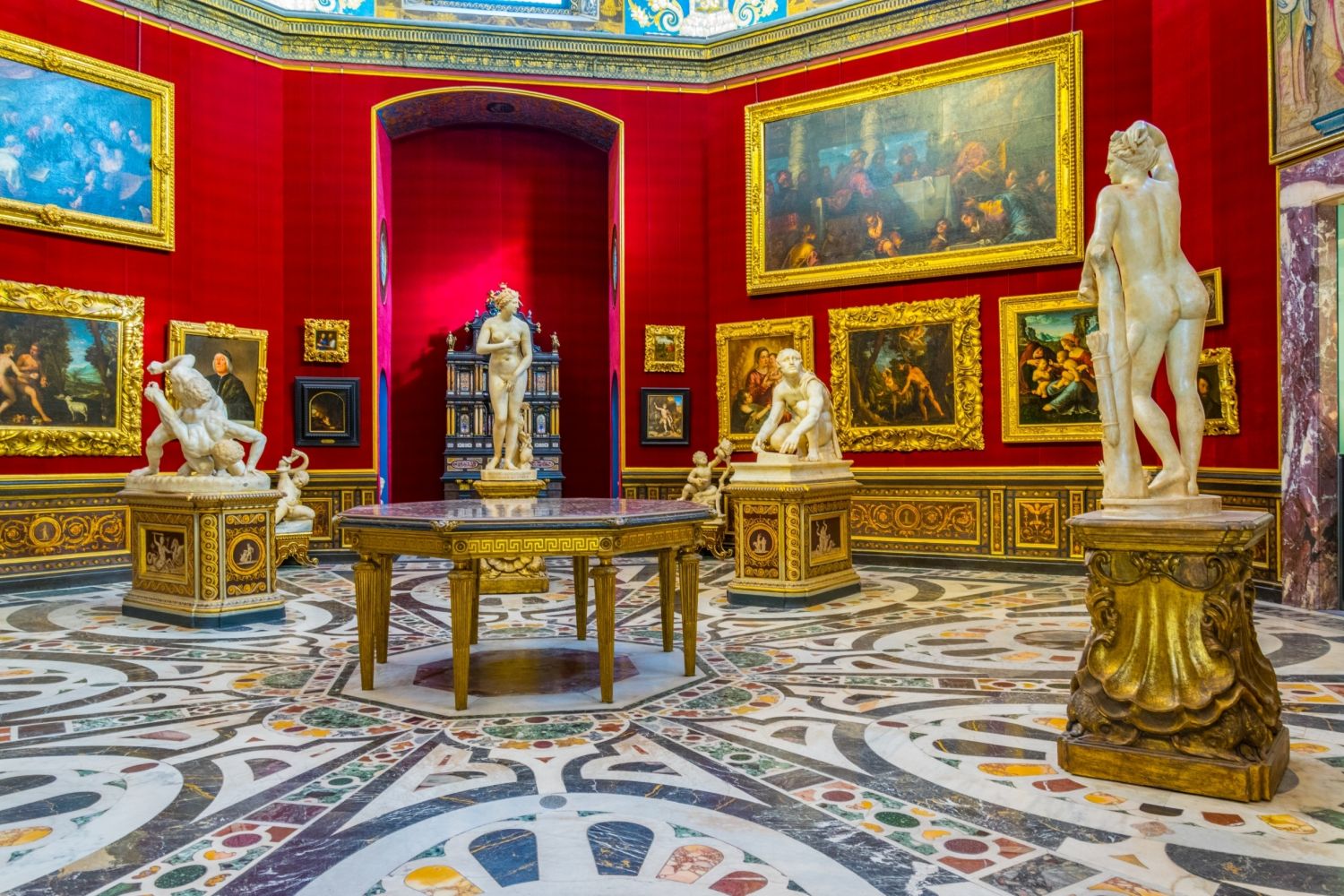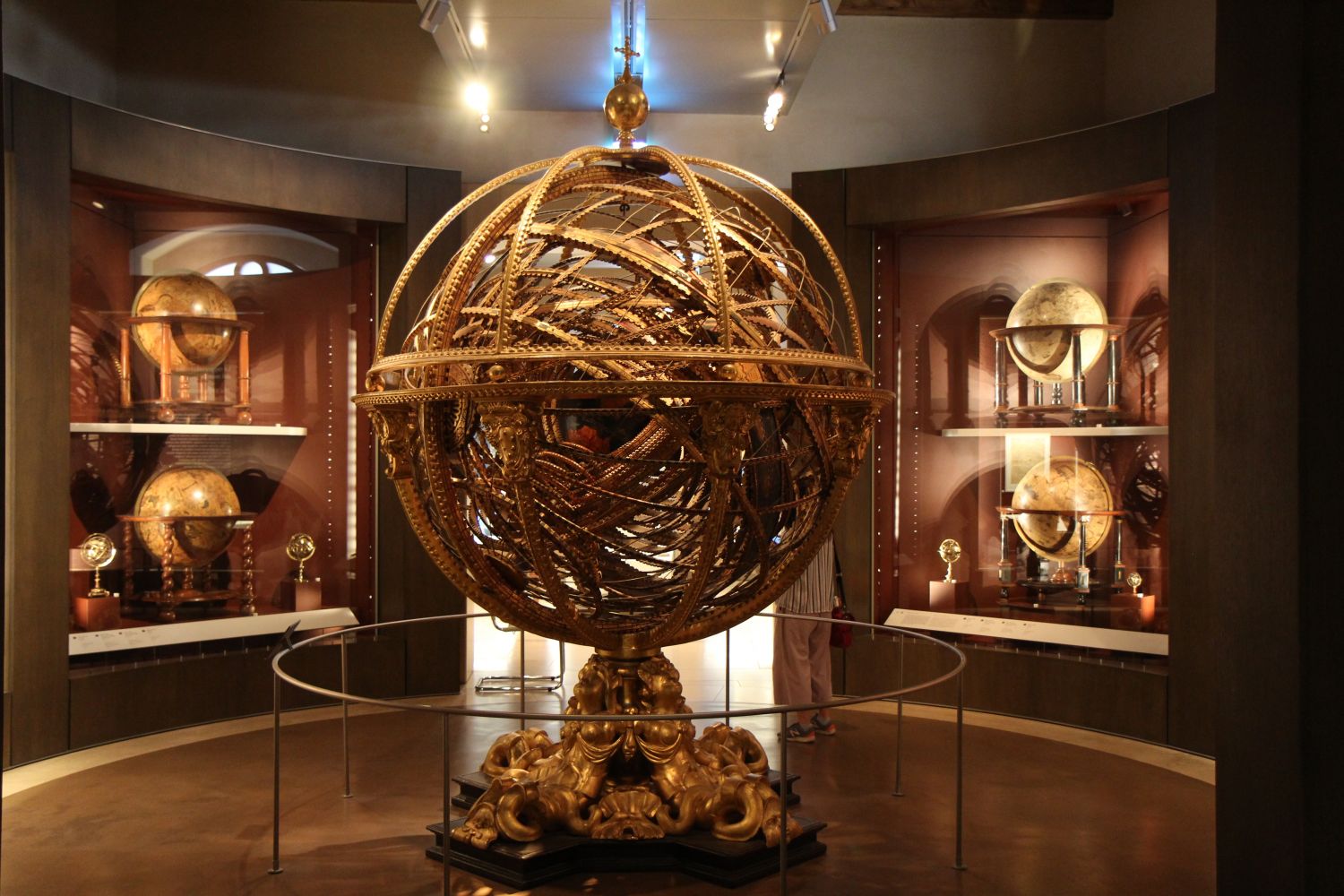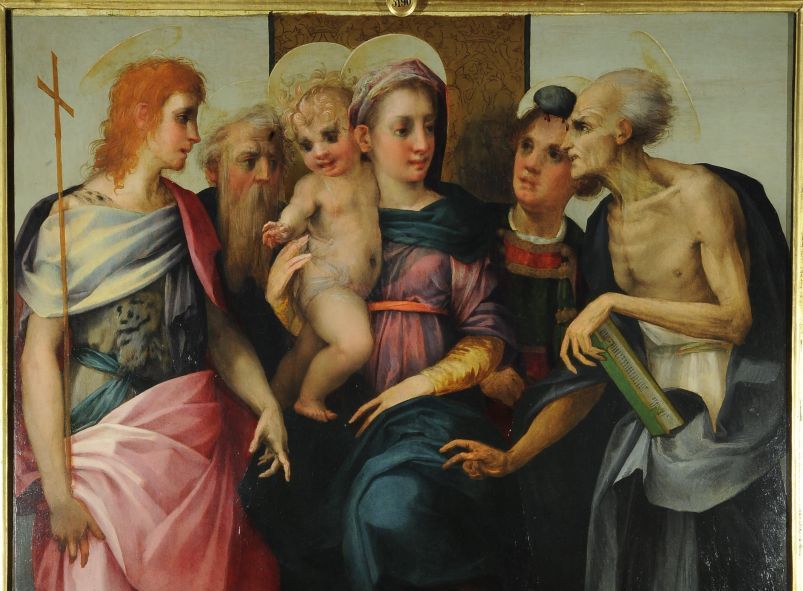
Pitti Palace and Boboli Gardens Tour
A day in court with the Medicis, the Lorraines and the kings of Italy..!
Explore










Pontormo and Rosso Fiorentino. Diverging Paths of Mannerism was an absolutely fantastic exhibition hosted at Palazzo Strozzi a few years ago..! Let's discover some of the fascinating, original Florentine homes of several of the stunning paintings that were on display. Their stories are so interesting, so closely related to the most important Florentine monuments that you can discover taking my private walking tour of Florence..!
However, many of these paintings can now be found in the Uffizi Gallery. Take my Uffizi Gallery Private tour, and see them with me..!
A Madonna and Child by Pontormo (1527 – 1528) used to be
under the Vasari Corridor..!
and next to a stained-glass window depicting the Entombment of Christ by Guillaume de Marcillat (1526). They are from the private chapel of Palazzo Da Uzzano Capponi “alle Rovinate” (“rovinate” means “collapsed”: this word was chosen due to the hill behind being particularly prone to landslides..!), between Via de’ Bardi and Lungarno Torrigiani. Both of these works were originally in the Barbadori Capponi chapel in Santa Felicita, which, along with the sublime Deposition on the altar, again by Pontormo, made up the decorative furnishings. The Barbadori Capponi chapel, designed by Filippo Brunelleschi who constructed its dome using the same technique as that of the Santa Maria del Fiore Cathedral (‘without scaffolding’) was reworked extensively by Giuseppe Ruggeri on behalf of Grand Duke Pietro Leopoldo in 1767, when the precious dome was reduced in size. This was so that they could make the balcony larger, overlooking the interior of the church from the Vasarian Corridor..! The stained-glass window found in Santa Felicita today is a copy; the Madonna was the central part of the altar frontal, later dismantled, and once time positioned below the Deposition in order to cover the altar.
The Madonna delle Arpie (Madonna of the Harpies) by Andrea del Sarto, now at the Uffizi, which used to be...in Lastrucci Mosaici's..!
Let's talk about the Madonna and Child with Saint Francis and Saint John the Evangelist, once in the 14th century convent of San Francesco de’ Macci (on the street of the same name), now found in the Uffizi Gallery. In 1704, the Grand Prince Ferdinando de’Medici appropriated the painting for his personal collection, repaying the nuns with an extensive renovation of the premises carried out by Giovan Battista Foggini. The deconsecrated buildings of San Francesco de’Macci today house Lastrucci’s workshop for the crafting of mosaics and commesso (inlay) of semi-precious stones..! The “Florentine mosaic” technique allows to create patterns with cut-to-shape, very thin pieces of bright-coloured semiprecious stones inlaid in slate. To the left of the Madonna delle Arpie, you can find one of the strangest paintings ever, the
Pala dello Spedalingo by Rosso Fiorentino (1517),
a rather odd Madonna with Child and Saints now found in the Uffizi Gallery. It should have been in Ognissanti, in a chapel, to the left of the high altar. To honour the final wishes of the Catalan widow Francesca de’ Ripoli, buried in that chapel, the governor of the hospital (who also had patronage of the chapel), Leonardo Buonafé, commissioned the work to Rosso, but was later very put out by the sight of the ugly caricatural features and by the ‘chipped’, sketchy and almost careless way the paint had been applied..! The altarpiece, which the governor judged unsuitable for Ognissanti, was sent to Santo Stefano a Grezzano, in Mugello. The Saint Leonard of the painting, in the meantime, had been transformed into Saint Stephen just by painting a stone on his head..!
L’Annunciazione (The Annunciation) by Andrea del Sarto (1512)
was originally in the San Gallo convent not far from today’s Parterre in Piazza della Libertà (outside the gate of San Gallo). The medieval convent was rebuilt in roughly 1488 by Giuliano Giamberti known as ‘da Sangallo’, at Lorenzo the Magnificent’s behest. It was demolished by the Florentine Republic in 1529 in anticipation of the terrible attack on the city by Charles V’s troops, who in this way would have found neither shelter nor supplies waiting for them. The painting was recovered in the Romanesque church of San Jacopo tra i Fossi (today the Evangelical Methodist church in Via de’ Benci). The same fate was shared by all the convents and monastries in close vicinity of the city walls, such as the Romanesque abbey of San Donato a Scopeto between the Via Ugo Foscolo and the Bellosguardo hill outside Porta Romana. Only the ruins, just discernible, of the external walls remain, alongside the magnificent portico that was later reassembled and attached to the façade of San Jacopo Soprarno..!
